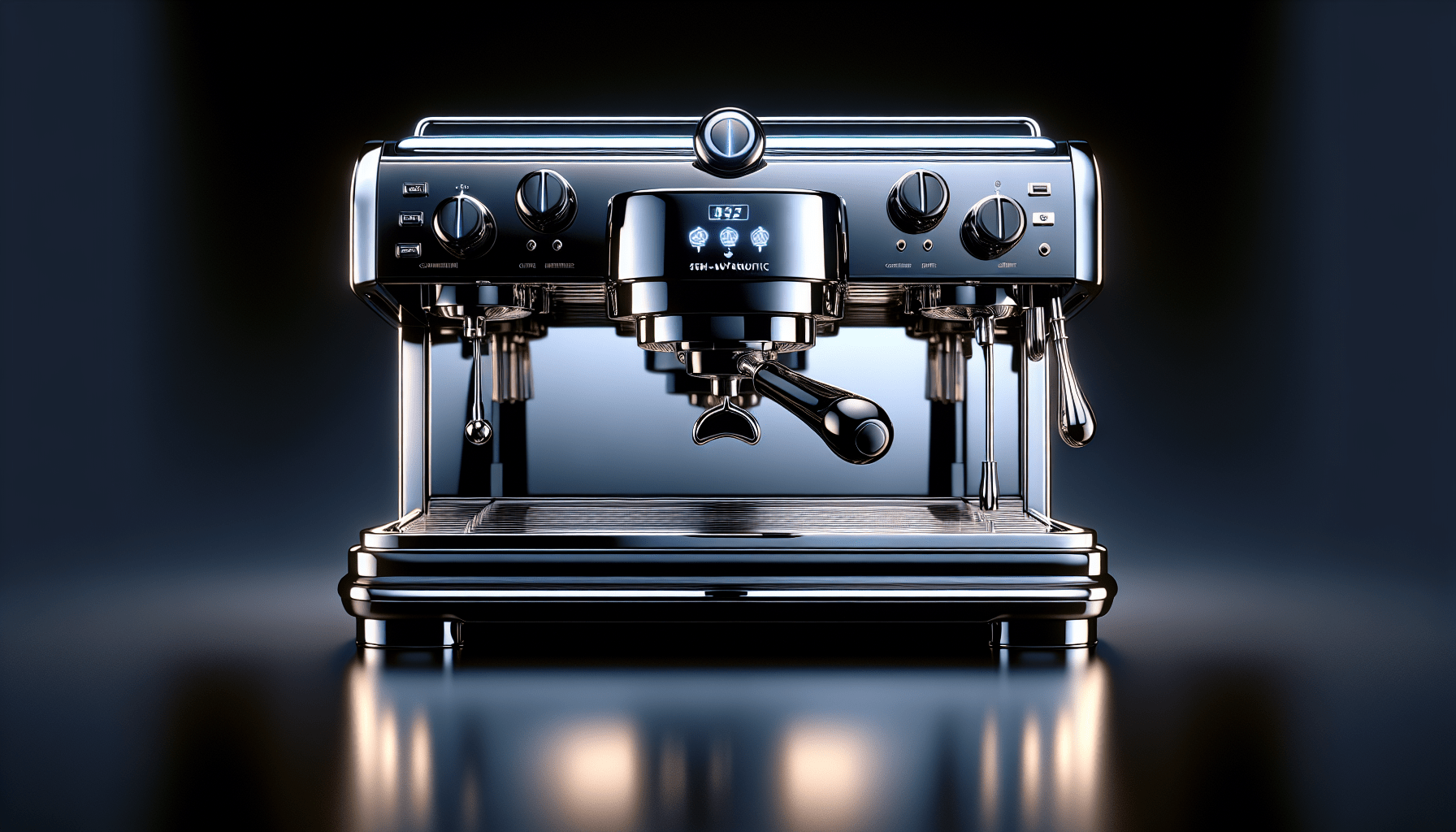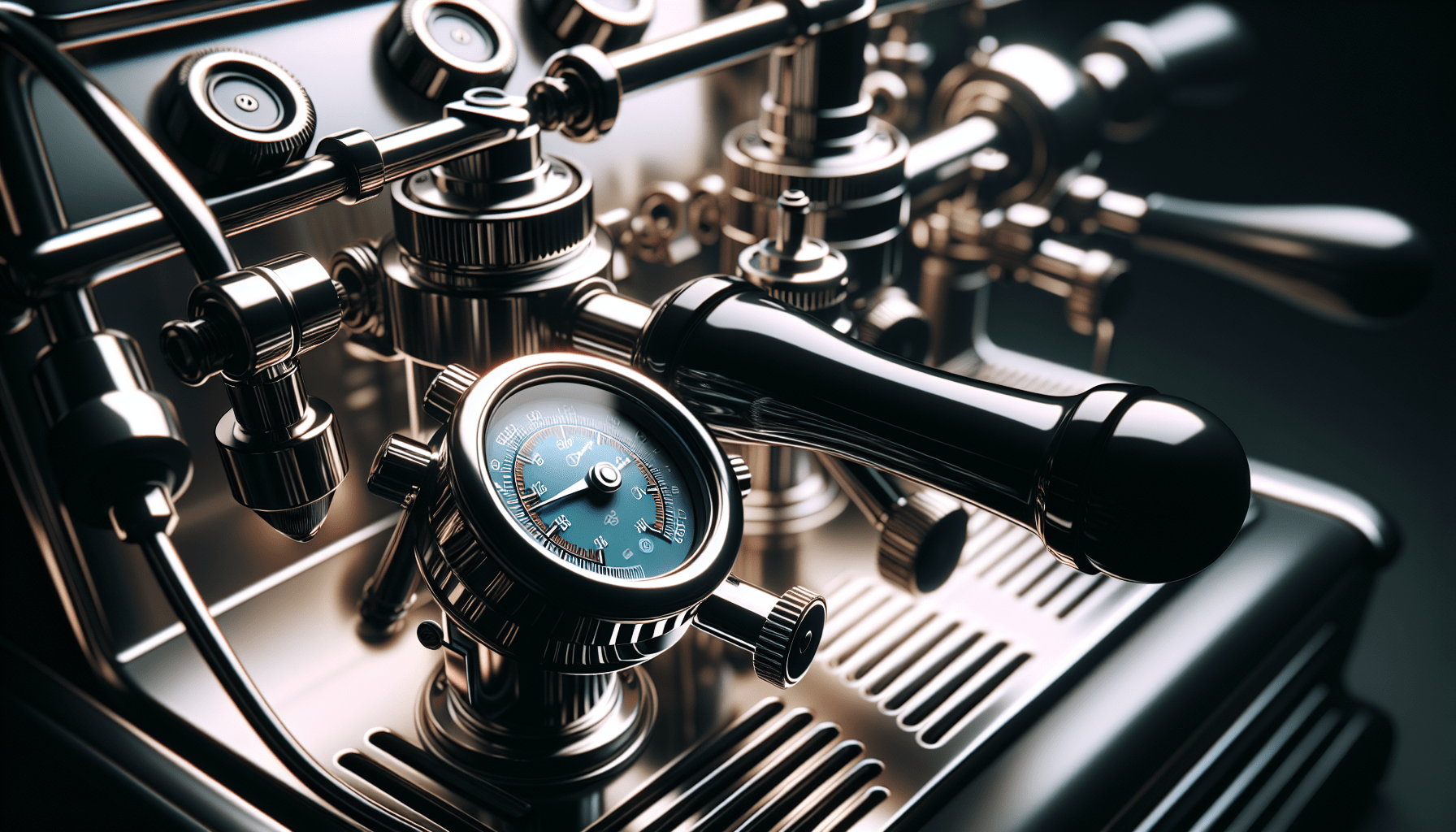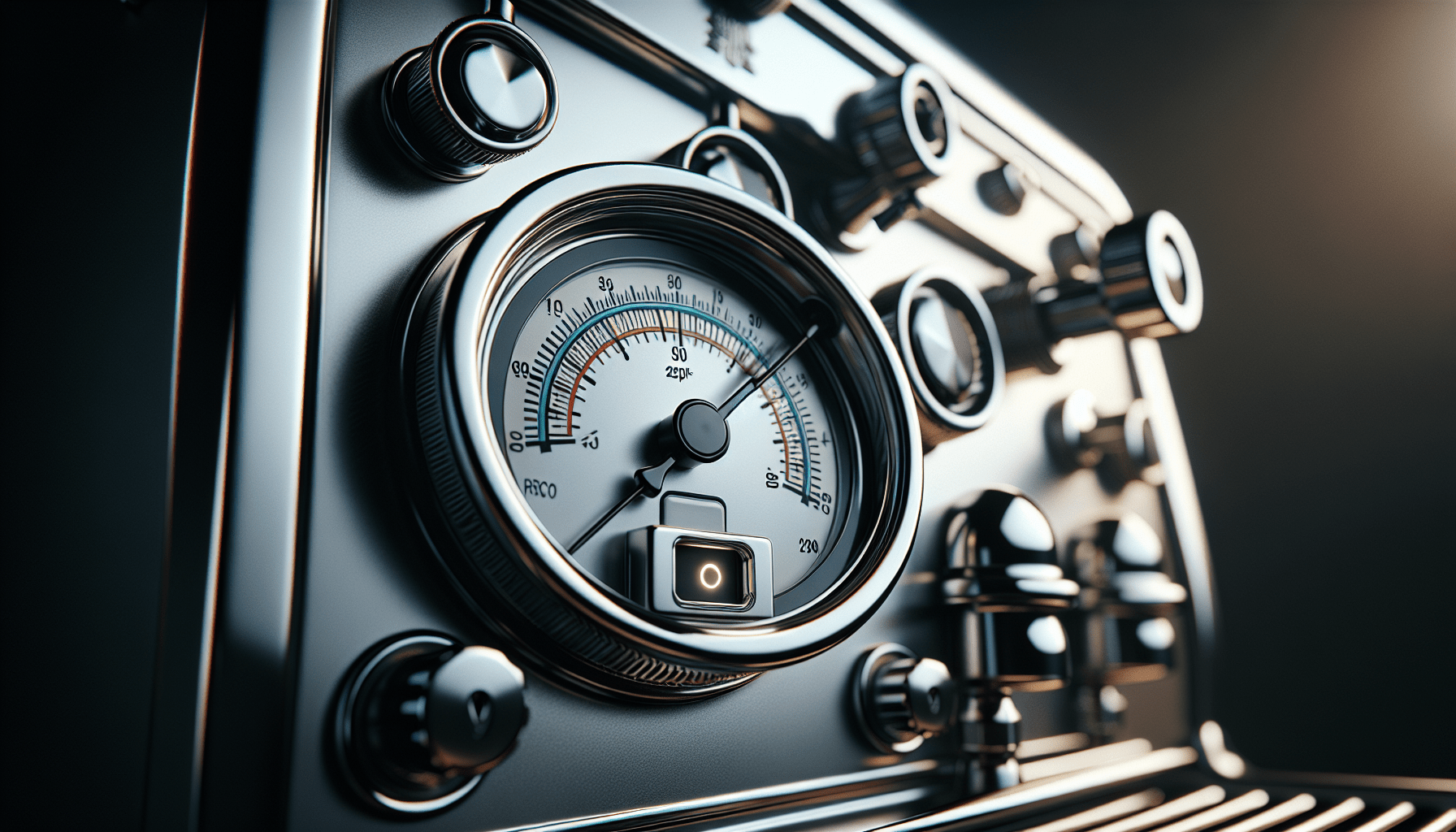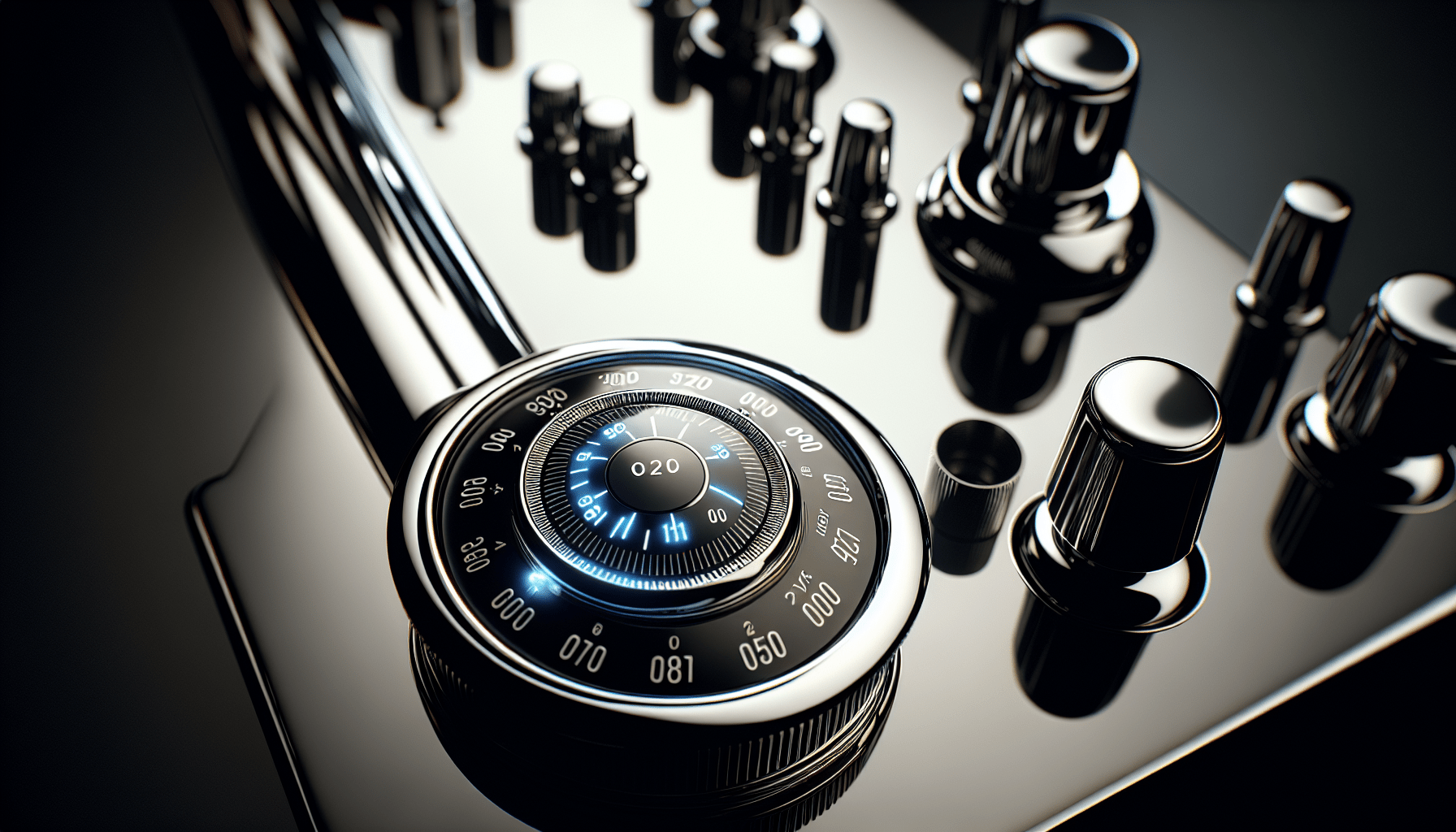You’re about to embark on a journey into the world of espresso machines, specifically focusing on the unique qualities of semi-automatic models. As you delve into the depths of this article, you’ll uncover the key distinctions that set these machines apart from their counterparts. So grab a cup of your favorite brew, sit back, and prepare to discover the wonders of semi-automatic espresso machines.
Basic Definition
A semi-automatic espresso machine is a type of coffee-making device that allows you to have more control over the brewing process compared to fully-automatic or manual machines. It falls in between these two categories, giving you the best of both worlds. With a semi-automatic machine, you can personally adjust the grind, tamping pressure, and extraction time to achieve your desired espresso flavor profile.
Features of semi-automatic espresso machines
One of the key features of semi-automatic espresso machines is the presence of a pump that helps to generate the necessary pressure for extraction. This allows for consistent and efficient brewing, resulting in a rich and flavorful cup of espresso. Additionally, semi-automatic machines often come with a built-in water reservoir, steam wand for frothing milk, and a portafilter for holding the coffee grounds during extraction.
How they differ from other types of espresso machines
Semi-automatic espresso machines differ from fully-automatic machines in that they require manual input during the brewing process. While fully-automatic machines handle everything from grinding to tamping and extraction automatically, semi-automatic machines give you control over these key brewing parameters. On the other hand, compared to manual espresso machines, which require you to manually pump water through the coffee grounds, semi-automatic machines have built-in pumps that do this work for you. This strikes a balance between convenience and control.
Operation
How semi-automatic espresso machines work
To operate a semi-automatic espresso machine, you start by filling the water reservoir with fresh water and turning on the machine to allow it to heat up. Once the machine reaches the desired temperature, you grind your coffee beans and fill the portafilter with the appropriate amount of grounds. You then manually tamp down the coffee using a tamper, exerting a consistent pressure to ensure optimal extraction. Next, you insert the portafilter into the group head and activate the pump, which forces pressurized water through the coffee grounds and into your cup.
Manual control vs. automatic functions
One of the defining characteristics of semi-automatic espresso machines is the ability to manually control various aspects of the brewing process. While fully-automatic machines take care of these steps automatically, semi-automatic machines allow you to adjust the grind size, tamping pressure, and extraction time. This hands-on approach gives experienced baristas the freedom to experiment with different techniques and achieve their desired flavor profiles. However, for those who prefer a more convenient brewing experience, semi-automatic machines often come with preset and programmable buttons for standard espresso recipes.
Brewing Process
Importance of temperature and pressure
Temperature and pressure are crucial factors in the brewing process of espresso. The water temperature should ideally range between 195°F and 205°F (90°C to 96°C) to ensure proper extraction of the coffee oils and flavors without burning the grounds. Pressure, typically measured in bars, is responsible for forcing water through the grounds and extracting the desirable compounds from the coffee. The ideal pressure for brewing espresso falls between 9 and 10 bars, which can be achieved using a pump in semi-automatic machines.
How semi-automatic machines achieve desired results
Semi-automatic espresso machines achieve the desired brewing results by allowing you to control the temperature and pressure settings. Through the built-in pump, the machine ensures that the water is heated to the desired temperature before it is forced through the coffee grounds. By adjusting the grind size, you can control the surface area exposed to the water, influencing the rate of extraction. Additionally, the ability to manually tamp the coffee grounds allows for further control over the pressure applied during the extraction process.
Grinding and Tamping
Role of grinding and tamping in espresso preparation
Grinding and tamping play a crucial role in the preparation of espresso. The grind size determines the rate of extraction: finer grinds extract more quickly, while coarser grinds take longer. Tamping, on the other hand, compact the coffee grounds in the portafilter, ensuring a uniform distribution of coffee and helping to create resistance to the water flow. Proper grinding and tamping techniques are essential for achieving a balanced and flavorful shot of espresso.
Options and control provided by semi-automatic machines
Semi-automatic machines provide you with a wide range of options and control over the grinding and tamping process. With most semi-automatic machines, you can adjust the grind size using a built-in grinder or a separate grinder. This allows you to customize the coarseness or fineness of the coffee grounds to suit your preference. Furthermore, the tamping pressure can be adjusted manually using a tamper, ensuring an even and consistent extraction. This level of control helps you fine-tune the brewing process and create a more personalized espresso experience.
Skill Level
Suitability for experienced baristas
Semi-automatic espresso machines are highly suitable for experienced baristas who have a passion for specialty coffee and want to have full control over the brewing process. The ability to adjust various parameters, such as grind size, tamping pressure, and extraction time, allows experienced baristas to experiment and fine-tune their techniques to achieve the perfect espresso shot. With their knowledge and expertise, they can utilize the capabilities of semi-automatic machines to showcase their skills and produce exceptional espresso beverages.
Learning curve for newcomers
For newcomers to the world of espresso, semi-automatic machines can present a learning curve. Understanding the various parameters and how they affect the flavor and extraction can take some time and practice. However, with the right resources and guidance, newcomers can quickly grasp the basics of operating a semi-automatic machine. Many manufacturers provide user-friendly manuals and online tutorials that simplify the learning process and help newcomers get started on their espresso journey.
Customization and Control
Adjustable settings for personalized espresso
One of the standout features of semi-automatic espresso machines is the adjustable settings that allow for personalized espresso. You can control the grind size, tamping pressure, and extraction time, enabling you to achieve your preferred flavor profile. Whether you prefer a stronger and more robust shot or a milder and more nuanced flavor, a semi-automatic machine gives you the flexibility to customize your espresso based on your taste preferences.
Flexibility in creating different coffee recipes
In addition to personalized espresso, semi-automatic machines offer flexibility in creating various coffee recipes. With the option to adjust the strength and extraction time, you can explore different brewing techniques such as lungos, ristrettos, Americanos, and more. This versatility allows you to expand your coffee repertoire and cater to the preferences of different individuals. Whether you are catering to a range of tastes or simply want to explore new flavor profiles, a semi-automatic machine gives you the freedom to experiment and create.
Price Range
Comparison with other espresso machine types
When it comes to price, semi-automatic espresso machines fall in the middle range compared to fully-automatic and manual machines. Fully-automatic machines tend to be more expensive due to their advanced features and automation, while manual espresso machines can range from affordable to high-end depending on their build quality and additional features. Semi-automatic machines offer a good balance between price and functionality, making them a popular choice for coffee enthusiasts who want control over their brewing process without breaking the bank.
Factors influencing the price of semi-automatic machines
The price of semi-automatic machines can vary based on several factors. One such factor is the build quality and materials used in the construction of the machine. Higher-end models may feature stainless steel or other premium materials, which can contribute to a higher price point. Additionally, machines with more advanced features, such as programmable buttons or built-in grinders, tend to be more expensive. Brand reputation and the overall design of the machine can also influence the price.
Maintenance and Cleaning
Routine care and upkeep of semi-automatic machines
To ensure optimal performance and longevity of your semi-automatic espresso machine, regular maintenance and cleaning are essential. Simple steps like cleaning the portafilter and group head after each use, descaling the machine periodically to remove mineral deposits, and changing the water filter when necessary can contribute to its overall longevity. It is important to follow the manufacturer’s guidelines for maintenance to prevent any issues and to keep your machine in top condition.
Cleaning procedures and frequency
Cleaning procedures for semi-automatic machines typically involve removing and rinsing the portafilter, cleaning the group head and shower screen, and wiping down the steam wand. Additionally, descaling the machine using a descaling solution is necessary to remove mineral buildup that can affect the taste of your espresso. The frequency of cleaning depends on usage, but it is generally recommended to clean the machine after each use or at least once a week for regular home use. Regular cleaning ensures that your machine maintains its performance and produces consistently delicious espresso.
Longevity and Reliability
Durability of semi-automatic machines
Semi-automatic machines are known for their durability and long lifespan. Built with high-quality materials and backed by reputable manufacturers, these machines are designed to withstand regular use and provide years of service. With proper maintenance and care, a well-made semi-automatic machine can be a reliable companion in your espresso-making journey. Their robust construction and dependable performance make them a worthwhile investment for coffee enthusiasts who value longevity.
Common issues and troubleshooting
While semi-automatic machines are generally reliable, there may be occasional issues that arise. Some common problems include clogged group heads, steam wand blockages, or inconsistent water temperature. However, many of these issues can be easily resolved through regular cleaning and proper maintenance. In case of more complex problems, manufacturers provide customer support or repair services to help troubleshoot and fix any issues that may occur.
Popularity and Availability
Demand for semi-automatic espresso machines
Semi-automatic espresso machines have gained tremendous popularity among coffee enthusiasts and professionals alike. The demand for these machines is driven by their ability to provide control, customization, and consistency in the brewing process. With the growing interest in specialty coffee and the desire to replicate café-quality espresso at home, semi-automatic machines offer a practical and accessible solution.
Brands and models in the market
Numerous brands offer a wide range of semi-automatic espresso machines, each with its own unique features and design. Popular brands such as Breville, Rancilio, Gaggia, and La Marzocco are known for their quality and reliability. These brands offer an array of models suited for different budgets and needs, ensuring that there is a semi-automatic machine available for every coffee enthusiast. It is important to research and compare models to find the one that best fits your requirements and preferences.
In conclusion, semi-automatic espresso machines offer a balance between convenience and control. They provide you with the ability to adjust various brewing parameters, allowing for a customized espresso experience. With their flexibility, durability, and widespread availability, semi-automatic machines have become a favored choice among both experienced baristas and newcomers to the world of espresso. So why not embark on your very own espresso adventure and explore the possibilities with a semi-automatic espresso machine?




